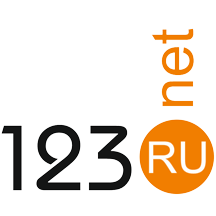Many Nations, Many Strengths
NORTH SEA
0530 ZULU
The U.S.S. GEORGE H.W. BUSH steamed due north at more than 30 knots, racing toward the last known location of a maritime distress signal associated with a sensitive research mission in the High North. As the American nuclear aircraft carrier continued north, the temperature dropped rapidly, which endangered the flight deck equipment that facilitated the launch and recovery of embarked fighter jets. Russian submarines were known to be in the area, making time a critical factor in reaching the research vessel. Due to changes in the water temperature and salinity due to climate change, tracking potentially hostile submarines was becoming more and more difficult.
Thankfully, a Canadian icebreaker conducting a routine patrol was simultaneously steaming to the same location, as was a British submarine and a Norwegian maritime patrol aircraft. Back on the continent, a newly established NATO Open-Source Fusion Center was combing through commercial overhead intelligence to attempt to geolocate the beacon. Together, on a state-of-the-art, low earth orbit-based tactical datalink, the platforms of these various allied countries were able to successfully locate and render aid to the vessel in distress.
The success of this High North operation was the result of a concerted shift in allied strategy from focusing on burden-sharing and meeting benchmarks in defense spending to devising mutually-supporting areas of specialization. Leaders in the Transatlantic community continued to grapple with limited resources as they struggled to meet rising defense spending thresholds and realized that much of this spending was needlessly duplicating capabilities that other allies already had. Instead, a new strategy focused on maximizing sources of competitive strategic advantage, making use of each country’s unique capabilities, thereby playing to the strengths of every NATO member’s military.
A key enabling element of this shift in strategy was a heavy investment in shared information and communication systems. Age-old security concerns about sharing potentially sensitive information broadly to dozens of member states initially slowed progress toward an Advanced Interoperable Information Network (AI2N), but these concerns were eventually ameliorated by embracing commercially available solutions, especially open-source intelligence (OSINT) and commercial space services. The barriers to information sharing were considerably lower when the information being shared was never classified in the first place. This effort also had an additional benefit of not just integrated allied militaries but allied defense industries as well, since efforts to fuse intelligence from a variety of sources enabled multiple nations to have a stake.
From search-and-rescue missions to everyday deterrence, prioritizing and coordinating specialization efforts across allied forces proved to be a far more effective means of boosting readiness. It refocused allied security on not just inputs, but outcomes, since at the end of the day, how much a platform costs has very little direct impact on that given capability’s effectiveness. Moving from burden-sharing to capability-based specialization ushered in a new, more effective era of transatlantic security.
Nicholas Romanow is an active-duty US Navy officer currently serving afloat in the Forward-Deployed Naval Forces-Japan. Prior to his overseas assignment, he was assigned to the National Security Agency’s Cybersecurity Collaboration Center. He holds a bachelor’s degree in International Relations and Global Studies from the University of Texas at Austin, where he was also an undergraduate fellow with the Clements Center for National Security. He has written widely on security and leadership matters for outlets including War on the Rocks, the US Naval Institute Proceedings, and the Pacific Forum.
Europe’s Edge is CEPA’s online journal covering critical topics on the foreign policy docket across Europe and North America. All opinions are those of the author and do not necessarily represent the position or views of the institutions they represent or the Center for European Policy Analysis.
2024 CEPA Forum Leadership Awards Dinner
Turning Leadership into Action.
The post Many Nations, Many Strengths appeared first on CEPA.
